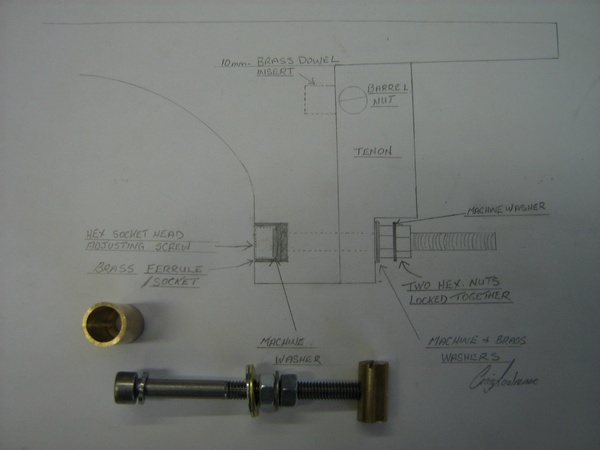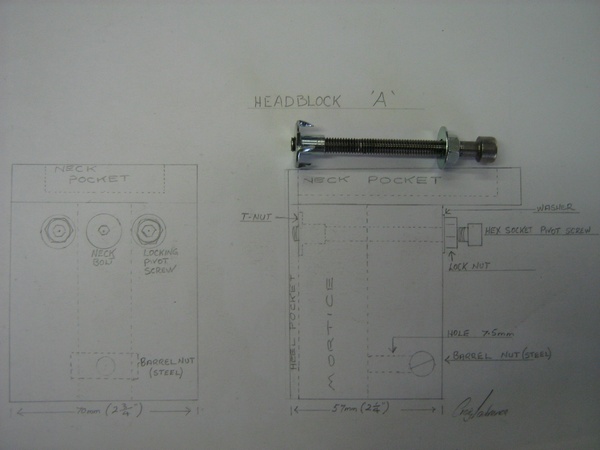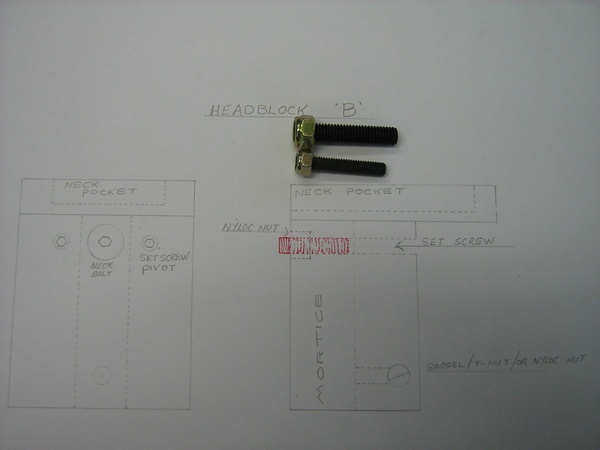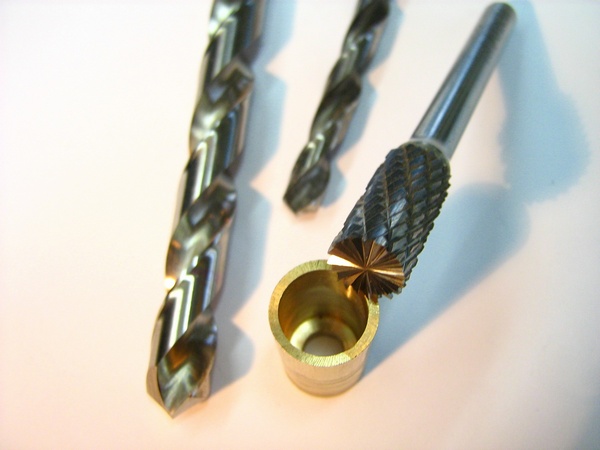In every design there will always be a spot that is under more stress than other parts of the overall design. If it were to be the socket head allen head adjusting screw in this case , then lets address that : I have a washer and slip washer between the screw's head and surface of the heel. I would probably in actual fact like to see that screw head have a larger footprint than the 10mm it has , but that would demand a larger hole , if it were to be rebated into the heel. Could make it make it a bit unsightly. I think after initial bedding in ,the 10 mm.diameter of the head would become quite stable. A resolve or aid should there be a problem , might be to simply put a couple of drops of C.A. in the heels rebate area to harden up the wood before assembly.
That's funny Dom.
Some guys go to the trouble of putting their label over their bolts on a bolt on set-up for that very reason. I've not bothered. As bolt-ons become more popular which seems the case , those folk will soon become educated to the" whys and hows."
Kim ,I take your point and understand that frequent adjustments to the neck angle may become a " hobby horse " to some folk, especially with this system being such an easy and quick adjuster. I don't see any harm in that. After all , if the system works well , is solid and the system itself is easily serviced ( by way of removing any slack that may arise ) , it's doing what it was designed to do.
Good morning folks !
Cheers, Craig



